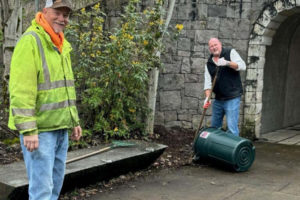The City of Camas is currently considering its options to fund sewer system infrastructure in a large portion of the North Urban Growth Area — the expansive area north of Lacamas Lake that was adopted into the city’s urban growth boundary in 2007.
During the May 5 City Council meeting, Public Works Director Eric Levison provided information about the option of forming a local improvement district to bring in an estimated $24 million that would cover the costs associated with planning, designing and constructing an extensive gravity sewer system.
The LID could encompass approximately 1,600 acres. The infrastructure would start in the Green Mountain area and provide gravity conveyance through a series of forced mains and pump stations to Crown Road.
Levison said the city has been working with a number of the North Urban Growth Area’s development groups, including Green Mountain Camas, LLC and CJ Dens Land Company.
“As we started to wrestle with this discussion, both with the development community and internally,” he said, “we wondered, is there a way to get some of the basic infrastructure in so that we don’t have to have these temporary or interim solutions?”



